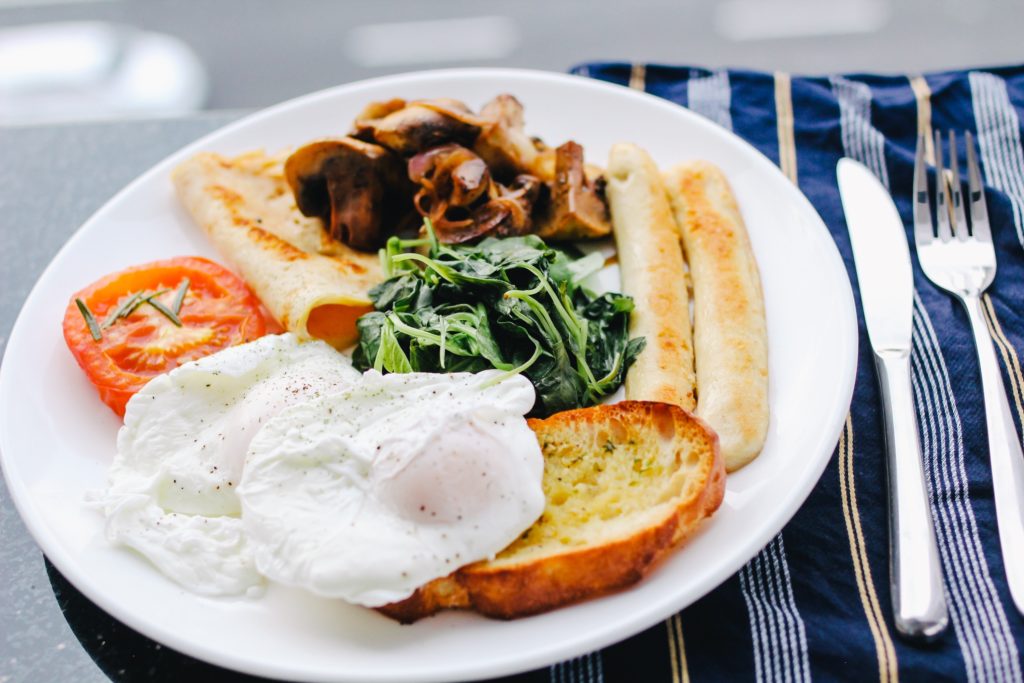1. Eat breakfast: A protein and healthy fat
breakfast is like putting gasoline in your car before a long road trip. This will keep you from irrational eating
during the day.
2. Eat regular meals: Eat regular meals every time you eat. The idea of eating small meals every four hours doesn’t mean mindless snacking.

3. Remember your “five-a-day:” Fruits and vegetables can be a good snack to replace sweets when needed. Fruits are high in nutrients and fiber and low in calories and fat. However overconsumption of fruits leads to sugar overload.
4. Eat slow-burning calories: High-fiber carbohydrates, such as legumes, and healthy fats, such as avocado, take longer to release energy and provide the proper nutrients the body needs so you will not get hungry as quickly.
5. Physical Activity: This can help your muscles and bones stay healthy and strong and also take your mind off eating. The void of inactivity is often filled with the desire to eat. A brisk daily walk is available to everyone and it is a good form of exercise. For people who use a wheelchair, being outside and moving can boost heart health and strength.
6. Drink water: This is important to keep the body cool and that in itself will stop you from constantly eating. Avoid alcohol, sodas, stimulants and drugs as these disrupt the bodily system and cause severe illnesses. If you crave sweets, make sure you choose an organic choice and are aware of the sugar content
7. Eat more fiber: Fiber, found in fruits, vegetables, and wholegrains, will help with the digestion of protein and will satisfy your cravings for sugar.
8. Read Ingredient Labels: A lot of food contains an extreme amount of sugar, chemicals, bleaching, additives, preservatives and little nutrition benefits.
9. Be aware of your portion intake: If you were a child I would say use smaller plates, but as an adult use whatever plate you want, just cut the portions you are about to eat in fourths or half and save that food for your next meal. Research indicates that portion sizes have increased over the last 3 decades, and this surely contributes to obesity.
10. Slow down and chew: Eat slowly and keep your eyes looking forward when you eat, not stuck on the plate. Rest between courses, talk with someone you are with, and if alone read something to allow your food to start digesting and have the stomach send a signal to your brain that you are getting full.
11. Make a shopping list and stick to it: Plan a week of healthful meals and snacks, list the ingredients you need, make sure you shop organic and buy groceries for balanced meals.
12. Eat what you crave: Restricting foods can lead to
cravings and bingeing. Take that evil food you like, make sure it’s organic,
cut it in small pieces (since it’s usually chocolate) eat a small piece slowly
and keep the rest for any time you wish.
This gives you control over the food and not food control over you. In most cases we just don’t eat the another
piece until the next day.
13. Get enough sleep: Sleep loss affects the metabolism, and lack of sleep has been linked to panic attacks, depression, weight gain and obesity.

14. A full meal at night: Eating a full meal for dinner will help in avoiding eating junk food late at night, providing you keep a good sleep schedule as well as a good meal eating plan. If you feel like eating within 2 hours of sleeping make yourself some hot tea or soup broth.
©Copyright – Hector Sectzer

















